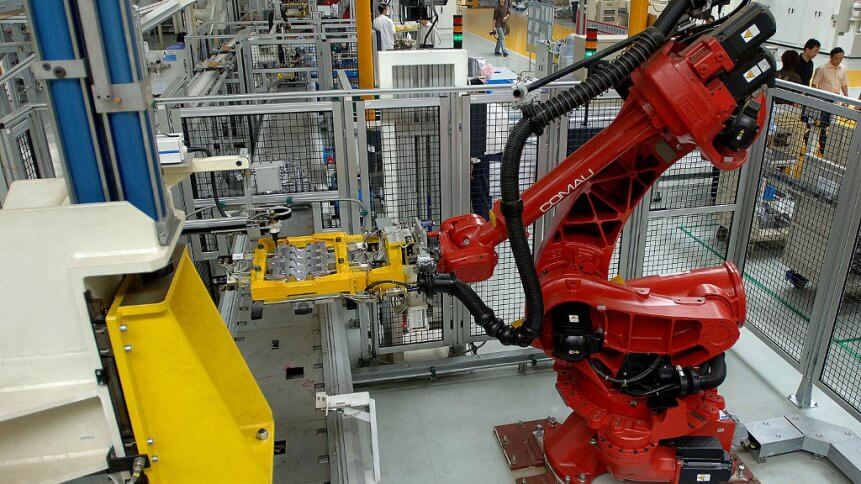
In the digital transformation race, companies often face a fork in the road: automate, or risk being left behind. Many have started taking heed by automating work and augmenting knowledge tasks, resulting in a visible impact on the global robotic process automation (RPA) market, which is valued at around US$3.5 billion in 2021 but is projected to grow at an estimated 40% per year until 2026.
When COVID-19 struck, business leaders have had to reimagine the future of work and take stock of their digital transformation efforts. Some CIOs have a natural tendency to batten down the hatches in times of crises by cutting costs or reducing risks, but a report by Gartner has shown that this approach limits a company’s ability to thrive. In contrast, enterprises that are considered “fit”, had undertaken a different approach and have emerged stronger from crises.
The two camps
As part of an ongoing collaborative research series between Blue Prism and Knowledge Capital Partners (KCP) that looks at companies that have either accelerated their automation roll-out or hunkered down, it found that in the wake of the pandemic, 85% of companies played it safe while 15% went bold with their automation efforts. And there was a clear division of outcomes.
In the 15% of businesses that continued to invest heavily in automation, the research found that RPA has become a critical execution platform that plays an integral role in the company’s strategic aim to achieve value creation for stakeholders. By utilizing the potential of RPA to create ‘intelligent automations’ and integrate RPA with advanced cognitive technologies, these companies are able to free themselves from the limitations of legacy systems, implement innovative solutions that improve productivity, and develop new services through the creation of powerful customer experiences.
On the other hand, the 85% of companies that hunkered down by either slowing their automation strategies or investing in the bare minimum required for their business to run, are usually caught in a phase characterized by just efficiency and short-term gains. While digital transformation efforts may still be ongoing during this phase, they lack interconnectedness as they are likely being driven from different places with different budgets.
Therein lies the risk of narrowing the company’s focus on having a more bottom-up approach to using automation to increase efficiency. These companies are confined from extracting the full business value of RPA – this compares to initial indications of the potential to gain 500% more value, according to KCP, if they had gone big instead. On top of this, the research also suggests something more concerning: without sufficient strategic investment in digital technology, these companies’ competitiveness relative to other leaders in automation will degrade significantly and possibly irreversibly over the next five years.
YOU MIGHT LIKE

Time to ditch the CoE? RPA is better left to individuals
The impact of going big
To “go big”, companies must appreciate and realize the massive potential value of RPA and other technologies in creating efficiency, effectiveness, and enablement benefits. Here are two organizations that have grasped the problem and opportunity:
- When the pandemic triggered policies by the Thai government to mitigate financial stress, Siam Commercial Bank (SCB), Thailand’s oldest financial institution, had to step in to assist customers in accessing that relief. With a surge in the number of applications, the bank raced to process these applications in time to ensure prompt repayments. Aided by the recruitment of additional digital workers, which are essentially a scalable team of low or no-code software robots, into its workforce, SCB designed an optimization and deployment process to book customer applications into the system. By the end of a month, it was able to process over 100,000 applications, taking significant pressure off of its employees and serving its customers during this critical juncture.
- Telefónica, like any other telco in the world, saw a sharp increase in bandwidth demand as mobility and social distancing restrictions forced people to adapt to the remote studying and working model. While deployments were already made in automation-friendly areas such as finance, commercial, and operations, the simplification of customer engagement was critical during the pandemic to manage Telefónica’s extensive customer base. Digital workers were deployed to field an excess of 100,000 inquiries a day. By automating manual tasks, the time taken by staff on each call was reduced by 30%-50%, affording them with more time and space to engage with some of Telefónica’s important clients.
Through the lessons elucidated by the pandemic, RPA has emerged as a key counterpart for companies that are aiming to strengthen their current and future business agility and resilience. The research is incontrovertible – going big with automation is a critical component in gaining competitiveness and differentiation. Companies that have hunkered down or made a slow start to their digital transformation journey will need to embrace the strategic business opportunity and rapid time-to-value of RPA, or risk falling further behind the pack.
Article contributed by Dan Ternes, Chief Technology Officer, Asia Pacific, Blue Prism








